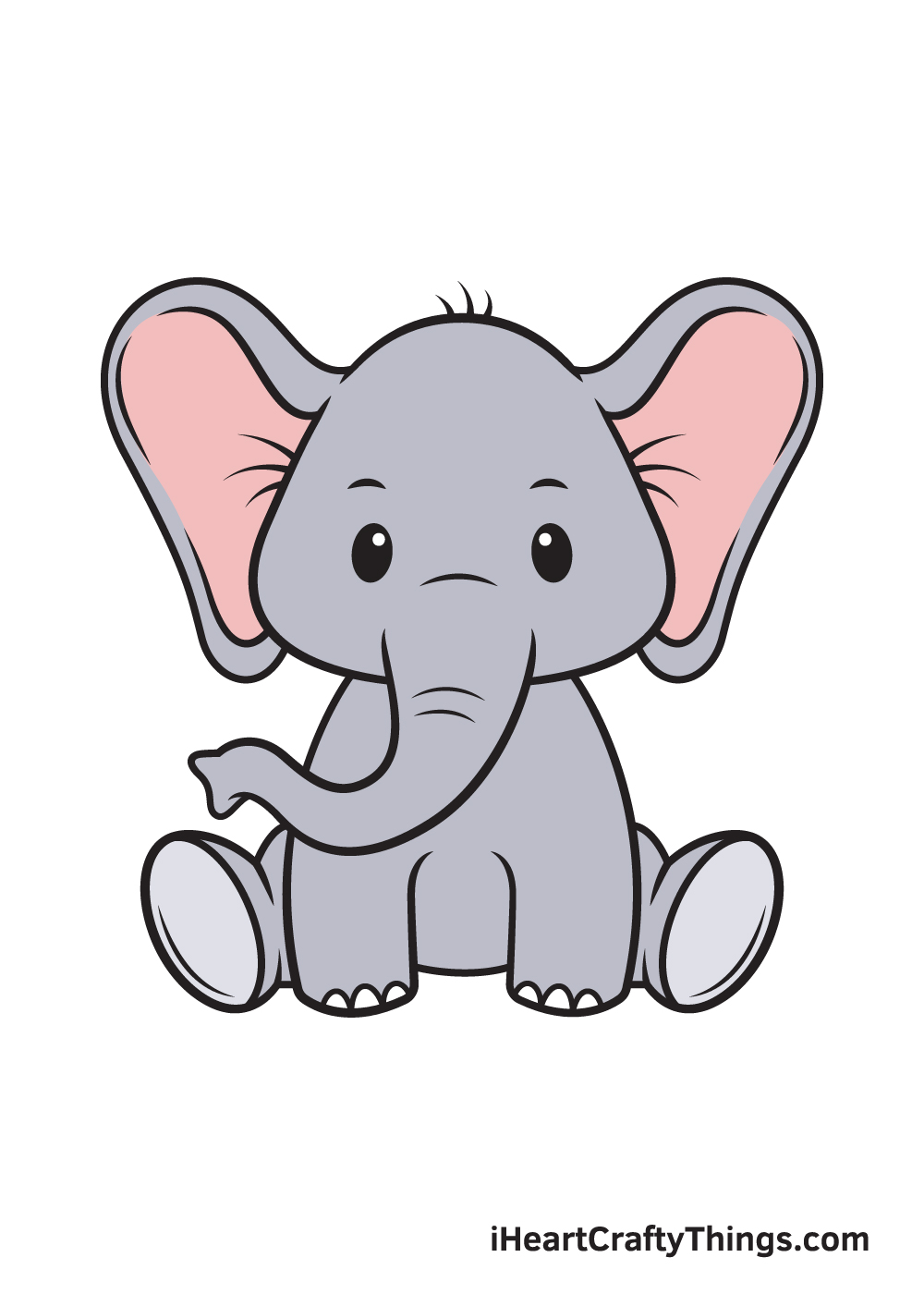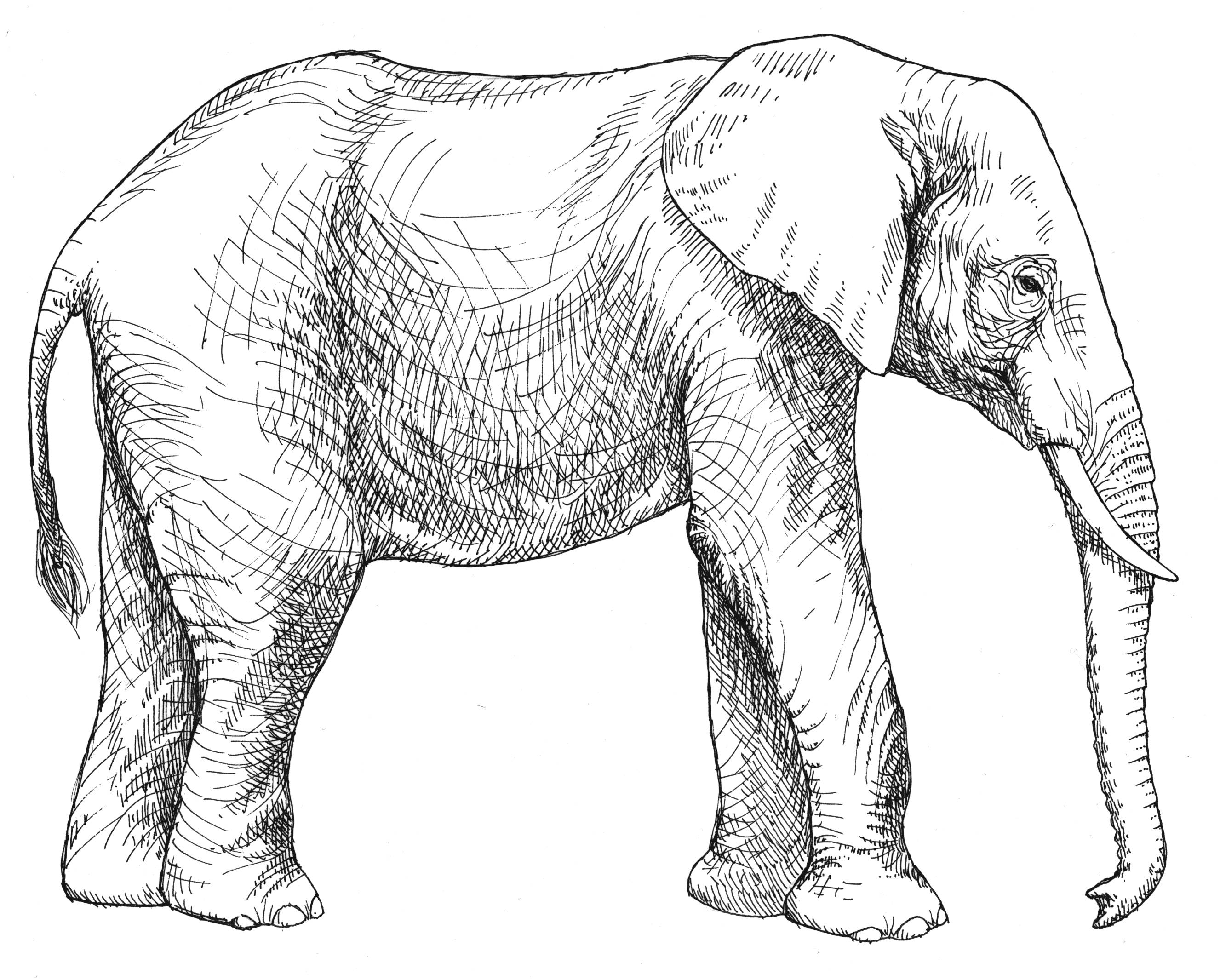Learn How To Draw An Elephant Easily
Ever wondered how to capture the gentle giant of the savanna on paper? Unlocking the secrets to drawing an elephant, whether a charming cartoon or a lifelike portrait, is easier than you think. From simple lines to intricate details, mastering the art of elephant sketching is a rewarding journey for artists of all ages.
The elephant, a symbol of wisdom and strength, presents a unique challenge for aspiring artists. Its large size, complex features, and expressive trunk can seem daunting at first. But by breaking down the process into manageable steps, even beginners can achieve remarkable results. The key lies in understanding the underlying structure and proportions of this magnificent creature, then building upon that foundation with carefully observed details.
| Common Name: | African Bush Elephant, African Savanna Elephant |
| Scientific Name: | Loxodonta africana |
| Conservation Status: | Endangered |
| Habitat: | Savannas, grasslands, and forests of sub-Saharan Africa |
| Diet: | Herbivore (grasses, leaves, bark, fruit) |
| Lifespan: | 60-70 years |
| Weight: | Up to 6,000 kg (13,200 lbs) |
| Height: | Up to 3.3 meters (10.8 feet) at the shoulder |
| Distinguishing Features: | Large ears, long trunk, tusks in both males and females |
Learn more about African Elephants at the World Wildlife Fund
Begin your artistic journey by simplifying the elephant's form. A large, rounded shape for the body, followed by a smaller circle for the head, establishes the basic proportions. Imagine the elephant's powerful legs as sturdy pillars supporting its massive frame. Don't be afraid to experiment with different poses a side profile offers a clear view of the elephant's distinctive silhouette, while a front view emphasizes the majesty of its tusks and trunk.
The trunk, a marvel of nature, is crucial to capturing the elephant's essence. Start with a curved line extending from the head, then add subtle curves and folds to suggest its flexibility and power. Remember that the trunk tapers towards the tip. The ears, large and fan-like, play a vital role in the elephant's communication and thermoregulation. Draw them as elongated ovals, adding details like wrinkles and veins for a touch of realism.
Details breathe life into your drawing. Small, expressive eyes nestled within the larger contours of the face give the elephant personality. Experiment with different eye shapes to convey a range of emotions, from gentle curiosity to playful mischievousness. Tusks, if present, emerge from the sides of the face, curving gracefully outwards. Remember that tusks vary in size and shape depending on the individual elephant.
Whether you're aiming for a whimsical cartoon elephant or a detailed portrait, the principles remain the same. For a cartoon style, exaggerate the features, focusing on rounded shapes and simplified details. A realistic approach, on the other hand, demands careful observation and attention to anatomical accuracy. Shading and texturing bring depth and dimension to the drawing, creating a sense of volume and realism. Start with light strokes, gradually building up layers of graphite or charcoal to achieve the desired effect.
Adding a background can enhance the overall composition. A simple grassy plain or a lush forest setting provides context and adds visual interest. Consider including other elements like trees, shrubs, or even other animals to create a more dynamic scene.
Drawing an elephant is not just about replicating its physical form; it's about capturing the spirit of this magnificent creature. Patience, practice, and a keen eye for detail are essential. Don't be discouraged by initial attempts. Each stroke of your pencil brings you closer to mastering the art of elephant drawing. Embrace the process of learning and experimentation. Soon, you'll be able to bring these gentle giants to life on paper, showcasing their unique beauty and grace.
From the initial sketch to the final details, drawing an elephant is a journey of observation and artistic expression. Experiment with different approaches, from quick sketches to detailed studies. Don't be afraid to let your creativity guide you. The more you practice, the more confident you will become in capturing the essence of these magnificent creatures.
Remember, the most important thing is to enjoy the process. Let your passion for art and your fascination with elephants shine through in your work. With each drawing, you'll not only improve your artistic skills but also deepen your appreciation for the natural world and the majestic creatures that inhabit it.

